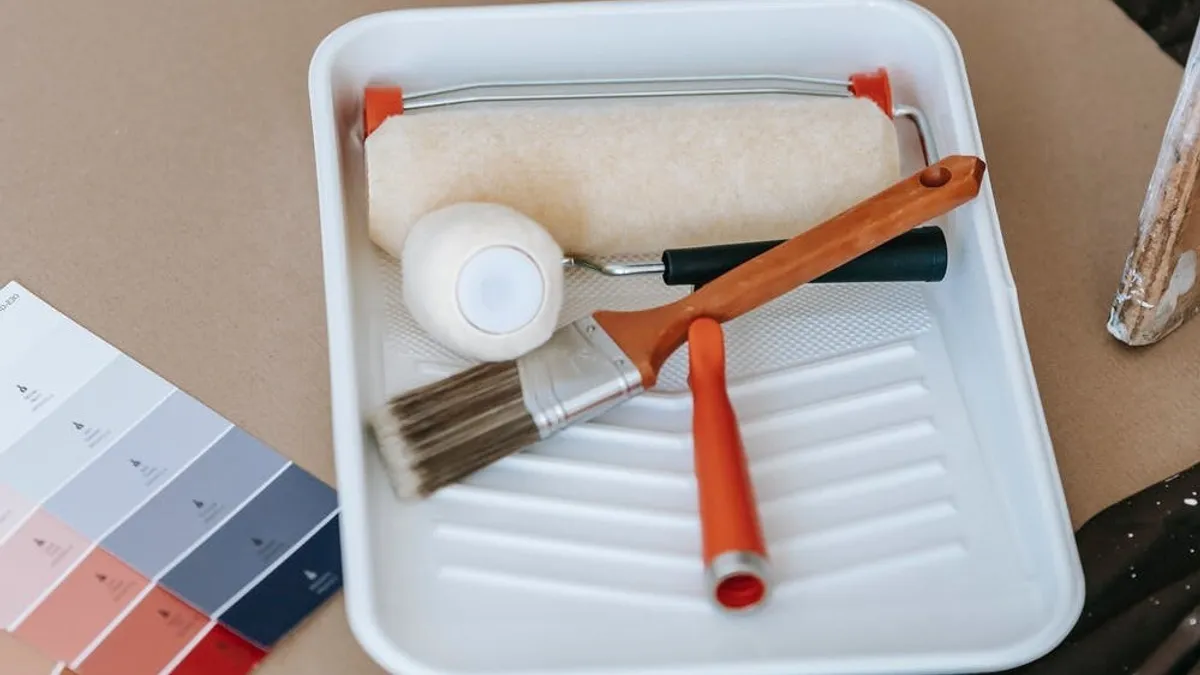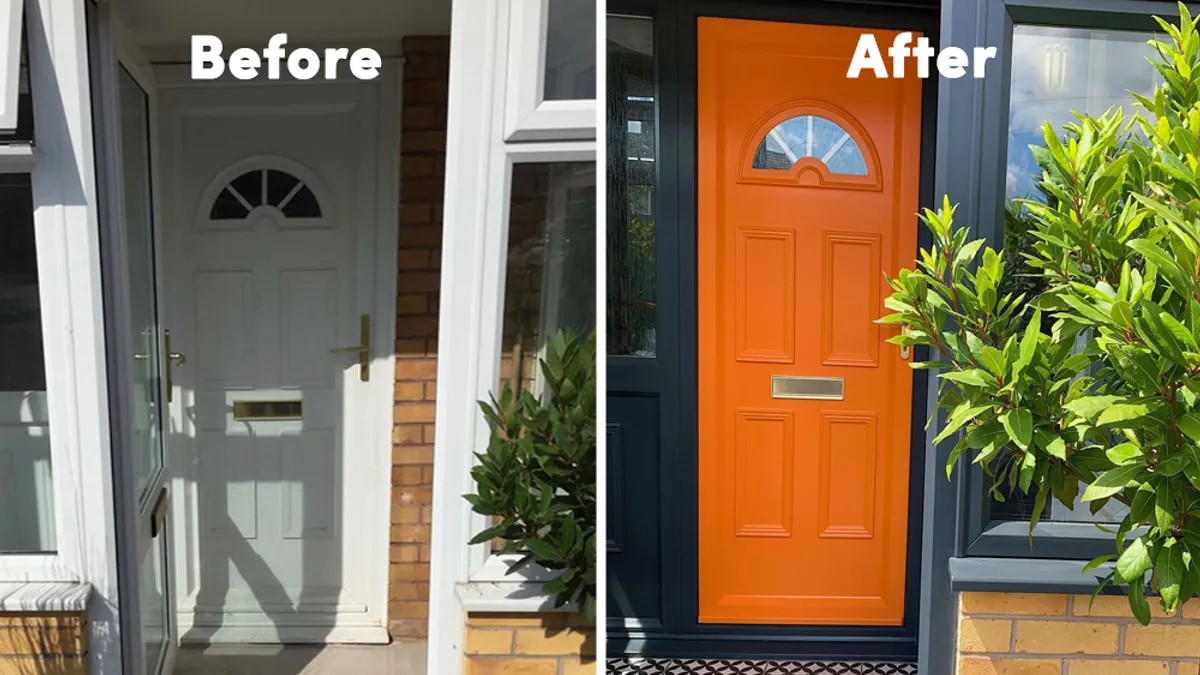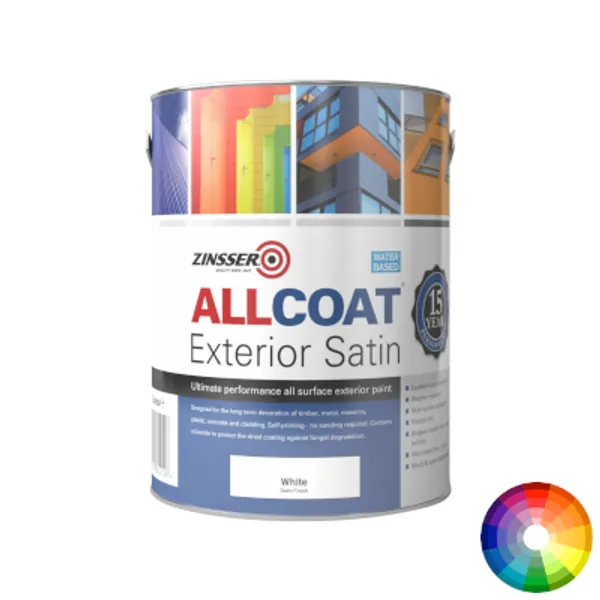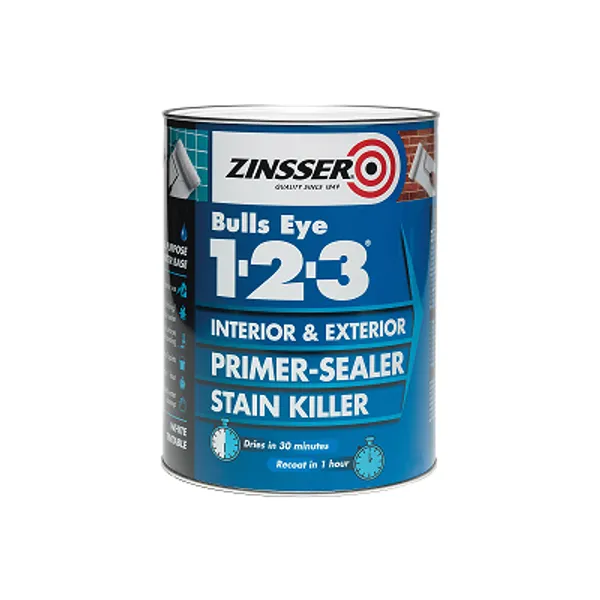The Best Plastic Paint - The Ultimate Guide
Plastic surfaces are found all over the home but are often left neglected as many people do not know whether they can paint them or how to go about it. That is why our experts have put together this handy guide, so you can find out everything you need to know about painting plastic around the home.

Painting Plastic
Plastic is a material that is used on a range of interior & exterior surfaces around the home, such as doors, windows, fascias & soffits, downpipes & furniture. Plastic often comes in the form of UPVC, which is the plastic polymer used for the vast majority of doors, window frames and fascias in the UK, often recognisable from the white shade that is usually used.
It is a relatively unknown fact that you can in fact paint plastic such as UPVC using a multi-surface paint. These paints are specially designed to paint any surface, such as wood & masonry, as well as difficult to paint surfaces such as plastic & metal that have high sheen levels and are very smooth surfaces. This makes it difficult to paint to adhere to the surface, which is why you must use a paint that has been designed to strongly adhere to even the most difficult surfaces to paint.
There are a number of things to consider when deciding whether to paint plastic.
Advantages
- Paint comes in a range of finishes and colours, so you can achieve a completely unique look that is perfect for you
- It is a cost-effective way of refreshing tired looking plastic
- The standard white UPVC can be rather boring - painting it can completely transform your property and potentially add value
Disadvantages
- Paint is likely to fade or peel over time, although using a good-quality paint will reduce this significantly
- It is not as simple as applying paint straight away - the surface must be properly prepared first
- As with any painting project, cutting corners will end up in an unsatisfactory finish that can stand out
The Best Plastic Paint
Finding the best paint to use for a project can be difficult, after all there seems to be an endless amount of paints that all claim to do the same thing. The reality is, not all paints are the same. To paint plastic effectively, you must have a good-quality paint and primer that will both ensure you get long-lasting, beautiful results.
Paint
When it comes to paint for plastic, our experts always recommend Zinsser Allcoat Exterior as the best, especially for the average DIY'er. There are a wide range of reasons why Zinsser Allcoat is so popular in the UK today. The first of which is that it has exceptional performance. It has a 15 year lifespan in all weather conditions, is recoatable in under an hour and has excellent resistance against cracking, blistering, flaking and fungal degradation.
While it is a product that has been designed for exterior use, it can be used on interior surfaces. This is because exterior products are simply designed with extra durability to help deal with the weather conditions an exterior surface must endure. This does not mean it can't be used inside however, it simply means that the product has more weather resistance than an interior paint.
As a water-based paint, Zinsser Allcoat is also very easy to apply & clean up, with oil-based paints often making painting difficult for less experienced painters.
The other reason key reason Zinsser Allcoat is the best plastic paint is that it is hugely versatile, allowing you to achieve any look you desire.
As a multi-surface paint, it is designed to adhere to any surface, including wood, metal, masonry & plastic. This is crucially important as many paints are only designed for particular applications, such as interior emulsion, masonry paint or metal paint. This allows you to use the paint on other surfaces that you plan on updating at the same time.
Furthermore, Zinsser Allcoat is available in matt, satin & gloss finishes, and can be mixed in almost any colour thanks to the paint mixing service here at Painters World. Any RAL, British Standard, NCS or equivalent shades of all major paint manufacturers colours, including designer shades, can be mixed. This gives you complete flexibility to achieve the look you desire, whether a modern anthracite grey, a bold jet black or a fashionable pale green.
Primer
Applying a primer to plastic before painting improves the ability for the paint to stick when applied and extends the lifespan of the paint. Our experts highly recommend Zinsser Bullseye 1-2-3 which is a universal interior & exterior water-based primer that offers fantastic adhesion to any surface it is applied to, including very smooth surfaces like plastic. It is low-odour, dries in just 30 minutes and contains a biocide that protects primed surfaces against fungus.
Overall, for the money it offers everything you could ask for with a primer if you are planning to paint any interior or exterior plastic.
How To Paint UPVC Doors
If you are planning on painting plastic surfaces such as doors, windows or fascias, follow our experts step-by-step guide:
What You Will Need:
- Paint
- Primer
- Sandpaper
- Paint brush
- Paint roller
- Dust sheet
- Masking tape
- A cloth
Step 1 - Preparation
The first job in any decorating project is to prepare the surface. This is crucially important for plastic as it very rarely comes ready to paint. You must first ensure the surface is thoroughly cleaned in order to paint. Use a cleaning solution or a degreaser to remove any dirt and wipe down using a cloth. The surface must be completely clean before you move on.
The next step is to lightly key the plastic. Using a 120-grit sandpaper, sand down the surface in order to create a slightly rougher texture in order to paint. This helps the paint adhere not only on application but long-term. It is advised to remove any additional decorations around the plastic you are painting, put a dust sheet down on the floor and apply masking tape to the edge of the surface. Using a good-quality masking tape is the secret to achieving those razor-sharp edges as these prevent paint bleeding through the tape.
Step 2 - Priming
Before you can apply paint to the plastic, it is hugely beneficial to apply a primer, which helps the paint to adhere to the surface.
The primer should be applied in a thin but even coating to the surface. With a paint brush, apply the primer around the edges of the surface, trying to avoid spilling the primer on other surfaces. This once dry can be extremely difficult to remove, so taking time to ensure you do not drip the primer is crucial. Once you have applied the primer around the edges, you can then use a brush or roller to apply the primer to the bulk of the surface.
Leave to completely dry before moving on.
Step 3 - Painting
Once the plastic you are planning to paint is clean, sound and primed, it is time to get painting. If you are painting exterior plastic, it is important to ensure the temperature is above 5°C as low temperatures make it difficult for the paint to dry. It is equally important to make sure that the temperature is below 20°C as this can cause the paint to dry to quickly which will result in an uneven finish.
Using either a roller or brush apply a thin, even first coat of paint to the plastic, once again starting at the edges as you did with the primer. We recommend that you use a roller to roll over the top of the brush marks that will be present when you have cut in around the surface. By doing this, you help to prevent what is known as the framing effect. This is caused when a brush applies a different amount of paint than a roller, resulting in two different finishes. By using the roller to go over any areas you have used a brush, you get a perfectly even finish. Using a high-quality brush & roller is another key factor in ensuring the best results.
Leave this to completely dry, which with a water-based paint should be around one hour.
Once dry, you can then apply the second coat of paint, this time slightly thicker. With a good-quality paint, you should be able to achieve a solid build of colour in just two coats. Having said this, if you are not achieving a satisfactory finish, do not overload the paint. Multiple thin coats of paint is better than a few thick coats if you want long-term performance. Ensuring that the paint covers any patches completely for a fantastic smooth finish.
Leave to dry completely once again and you should be finished! If you have used a cheaper quality paint, you may then have to apply a third coat after this.

Frequently Asked Questions
Q. Can you paint plastic garden chairs?
Yes, you can paint plastic garden furniture such as garden chairs in the same way you would paint other plastic materials. Use a good quality exterior paint such as Zinsser Allcoat and follow our step-by-step instructions on how best to paint plastic in order to transform your tired garden furniture into something beautiful.
Q. What is the price of plastic paint?
While you can buy some plastic or multi-surface paints for as little as £10 for 1L, we would advise avoiding these as they will fail in a matter of a couple of years. This will mean you will not only have to re-buy the paint, but you will have to take the time to re-paint the plastic again.
A good-quality paint such as Zinsser Allcoat will cost around £40 for 2.5L, which is often enough to complete a small project. While the upfront cost is more, the long-term value for money you will get far exceeds other paints on the market. Not only will it last 15 years but it will achieve a beautiful finish that after all is the main goal of your decorating project.
Q. Is plastic paint waterproof?
To be considered a waterproof paint, an exterior paint must be water repellent. This is something that only a few specialist products have, such as Emperor Masonry Paint. All exterior paints however have some level of weather resistance, helping to prevent moisture from getting underneath the paint film, which would cause it to fail. Generally, the more weather resistance a paint has, the longer its lifespan.
We hope this has answered any questions you may have had regarding painting plastic and the best plastic paint. If you require any more help, just send an email to the team at hello@paintersworld.co.uk. At Painters World we have a wide range of UPVC paint & all of the decorating supplies you need, so no matter the job, we've got the right tools for you.



Sign up now and be the first to know about exclusive offers, product updates, and announcements.



